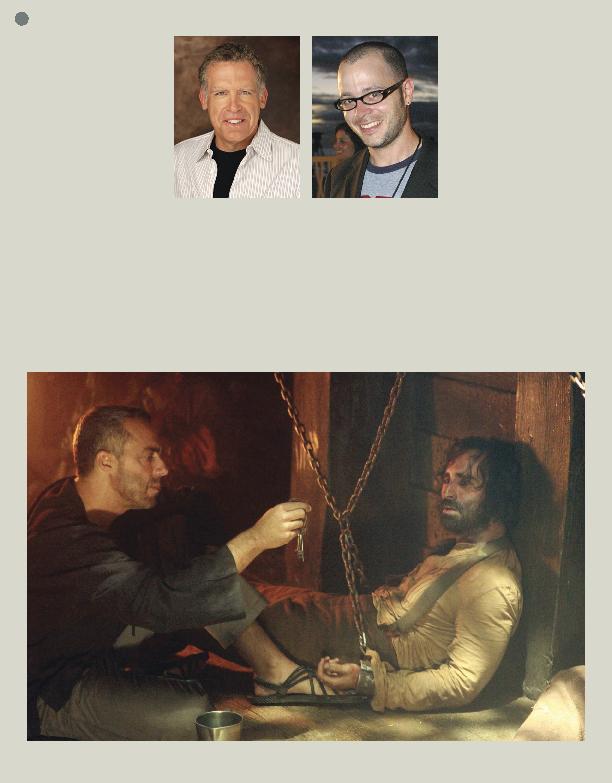
fort to control or influence the
writers. "No one thought that the
show was going to be successful so
they left us alone," Cuse says with
a smile. "We were left to our own
devices."
Horowitz, who eventually became
full executive producers of the
show as well, and the writers
began work on fleshing out the
mysteries -- and the answers -- to
their mysterious island. "We
began having much more detailed conver-
sations about where this was all going,"
Cuse says. However, the problem, which
soon became apparent, was that the writers
had no idea how long their show would be
on the air, given the fickle world of televi-
sion,. "So the tricky thing became that we
had this mythology, but we really had no
idea how quickly we should let it unfold,"
Cuse explains. "We had to start that story
and we found ourselves always in this tricky
predicament of [figuring out] how fast to let
to burn all of our fuel. On the other hand, if
we didn't burn that fuel, people would get
upset and say, `Oh, you're stalling.'"
swers and were making things up as they
went along, but Kitsis enjoys using an anal-
ogy that compares the show to a road trip. It
begins in Los Angeles and ends in New York,
but could follow any number of paths and
include any number of stops. "We may not
the world's largest waffle cone," he
chuckles, "but there's a sign for it
so let's go."
LOST will be revealed.
THE CURTAIN
the writing staff sitting down for
three weeks to discuss plot and
we call it mini-camp, like in football when
you go and you start doing drills," Kitsis ex-
plains. "That's where we plot out the sea-
son."
discussions of where the show is and where
the writers planned for it to be. This is fol-
lowed by a day of tossing out scenes the writ-
ers want to see, whether they are character
beats or action beats, and as ideas take form,